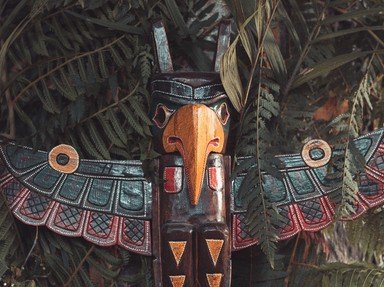Quiz Answer Key and Fun Facts
1. When Christopher Columbus landed in the New World, the estimated population of Native Americans in the U.S. was one million. By 1880, almost 400 years later, an estimated 250,000 had survived. This gave rise to which theory?
2. WWII
This man, one-eighth Osage, was the first Native American in the U.S. Army's history to attain the rank of Major General. Who achieved the rank of Brigadier General in 1940 and was the first American General to die in WWII combat?
3. WWII
Which Choctaw, after serving in WWII, Korea and Vietnam, fought his neighborhood homeowner's association for the right to fly the Stars and Stripes at his home in Virginia?
4. WWII
This man, the last of the original 29 Navajo Code Talkers, died in 2014 at the age of 93. Who was the Native American whose memoir, "Code Talker" was published in 2011?
5. WWII
Which Blackfoot was the first Native American female to serve in the U.S. Marine Corps?
6. Korea
This Chickasaw not only survived WWII and Korea but served from 1939 to 1962. Who, in 1951, was assigned by the U.S. Army to be the Technical Adviser for Samuel Fuller's film "Fixed Bayonets!"
7. Korea
The U.S. Army Installation at Uijeongbu, South Korea bears the name of which Ho-Chunk (Winnebago) who lost his life to the Chinese at the Chongchon River?
8. Korea
The VA Medical Center in Asheville, NC is named for which Cherokee hero of Korea?
9. Korea
This Choctaw was killed in action at Heartbreak Ridge. In 2007, the town of Blanchard, OK unveiled a life-sized bronze statue of which of their native sons?
10. Korea
This man served in both WWII and Korea but was awarded the Medal of Honor, posthumously, for his actions in Korea. Who was the Dakota Sioux who was being recruited by the Chicago White Sox when his National Guard Unit was called to service in WWII?
Source: Author
JudithCrafard
This quiz was reviewed by FunTrivia editor
gtho4 before going online.
Any errors found in FunTrivia content are routinely corrected through our feedback system.

